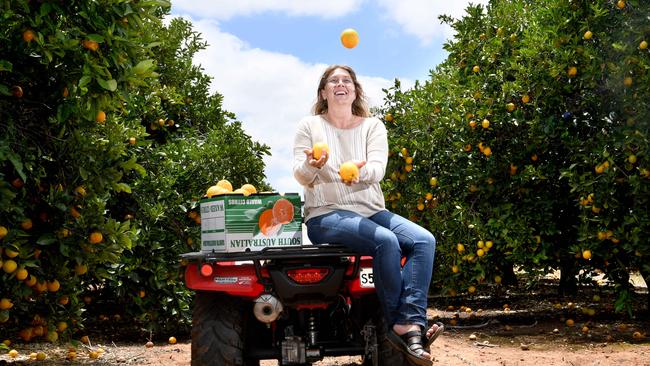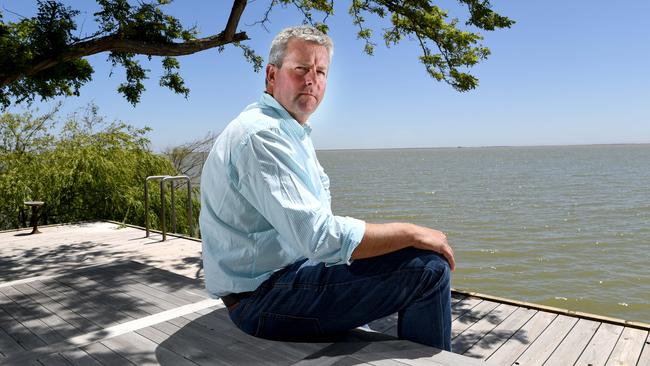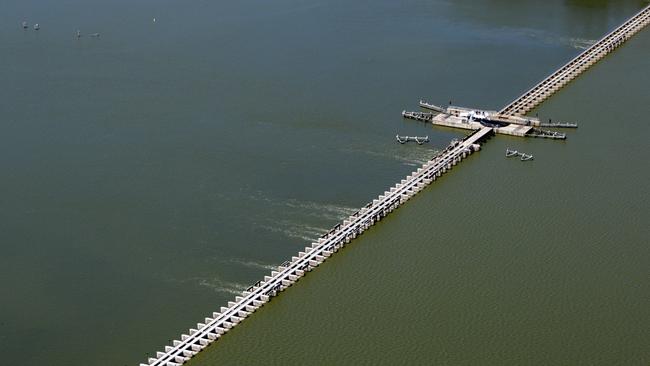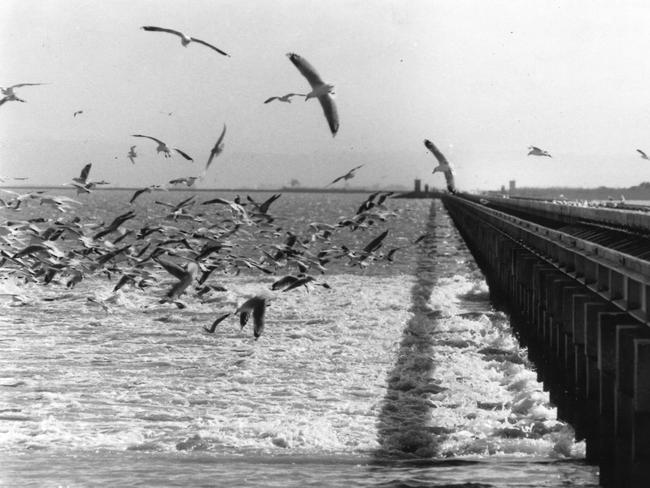Senate inquiry told of possible Basin water underuse as CSIRO report rejects calls to remove River Murray barrages
Up to 375GL of water may be going underused in the Murray-Darling Basin each year, a senate inquiry has heard. It comes as a new CSIRO-led study rejects calls to flood the Lower Lakes with saltwater.

SA News
Don't miss out on the headlines from SA News. Followed categories will be added to My News.
- How Government can help save the Murray Darling Basin
- How to get the most out of your Advertiser digital subscription
Up to 375GL of water may be going underused in the Murray-Darling Basin each year, a senate inquiry has heard.
It comes as Alexandrina Mayor Keith Parkes says flooding the Lower Lakes with seawater is “nonsense”, welcoming a report underlining the need to safeguard the watercourse’s freshwater status.
Murray-Darling Basin Water Resources Inspector-General Mick Keelty said the amount of water going unused was much larger than the 50GL a year previously estimated.
Mr Keelty told a Senate inquiry on Tuesday the Murray Darling Basin Authority (MDBA) believed up to 375GL a year may be underused.
“It is a very complex issue,” he said.
“The water doesn’t sit in a bucket somewhere where it can be immediately released and sent downstream to the people who need the water.
“It’s sitting in different valleys, in different locations.”
But Mr Keelty said it raised questions about the MDBA’s calculations on water use, and potentially had implications for issues including the 450GL of water required to be reclaimed for the environment under the Basin Plan.

A CSIRO-led study, released yesterday, warned of dire consequences to the Lower Lakes if barrages were removed and a new “Lock Zero” was built near Wellington.
Mr Parkes said the flooding push – backed by upstream irrigators and Deputy NSW Premier John Barilaro – was a “non-event” and “nonsense”.
“It’s a disaster for the lakes and the Coorong,” Mr Parkes said.
“We’re absolutely delighted with the report that’s come out substantiating what we’ve been saying.”
The review, commissioned by the MDBA, rejects claims that the area was a saltwater system before European settlement.
MORE NEWS
SA minister slaps down Murray Darling Basin inspector general Mick Keelty over Lock Zero
Murray Basin Rail fails farmers: Auditor slams Andrews Government’s poor governance
It adds that removing the barrages would kill marine animals and affect tourism and fishing.
SA Murray Irrigators chairwoman Caren Martin did not believe the debate over Lock Zero was over, arguing a new lock or other infrastructure might help better manage water flows, especially during times of drought.
This would particularly help irrigators upstream of Murray Bridge, and could also have environmental benefits, Ms Martin said, by reducing the impact of acid sulfate soils.
However, she said the CSIRO’s report was good for SA “in that it makes the case for the Lower Lakes to receive freshwater flows”.

The findings from the review support the State Government’s longstanding position to keep the barrages and essentially shuts down the proposal to remove them and build Lock Zero.
SA Environment Minister David Speirs welcomed the report, saying it “finally puts to bed some of the conspiracy theories that have been perpetuated by those upstream wanting to see less water flow to South Australia”.
“The science review reinforces the need for freshwater to maintain the environmental health of the region and shows there would be devastating outcomes if seawater was allowed to flow unimpeded,” he said.
“The report also shows that removing the barrages would not result in water savings.
“Low water availability across the Basin and the changing climate will continue to be a challenge in the future, but this just shows more than ever the importance of getting on with the delivery of the Murray-Darling Basin Plan.”
Upstream irrigators and politicians have previously claimed too much river water has been allocated under the Basin Plan to keep the Lower Lakes fresh, and say Lock Zero would allow more water to be used for farming instead.

“Looking at the near-term past, the past 200-300 years, the weight of evidence points to the Lower Lakes being largely fresh prior to European settlement, with the incursion of salt water during long, dry periods,” CSIRO scientist Francis Chiew said.
Removing the barrages “would not result in any water savings”, if the Basin Plan’s objectives were to be met, Dr Chiew said.
The review found removing the barrages would impact tourism, recreational and commercial fishing and would result in the deaths of threatened native fish and frog species.
There would also be implications for “irrigated agriculture and water supply to Adelaide and regional towns”, the report said.
Dr Chiew said while a Lock Zero might prevent adverse impacts on Adelaide’s water supply if barrages were removed, it would still have negative impacts for the Murray Mouth, Coorong and Lower Lakes.

Murray-Darling Basin Authority chief executive Phillip Glyde welcomed the report.
He said he hoped it would end debate on the history of the lakes and put more focus on the looming challenges of climate change.
“The report has really confirmed from our perspective that the management of the Lower Lakes is based on good science,” he said.
“We believe it is very important to maintain the fresh water status of the Lower Lakes.”
